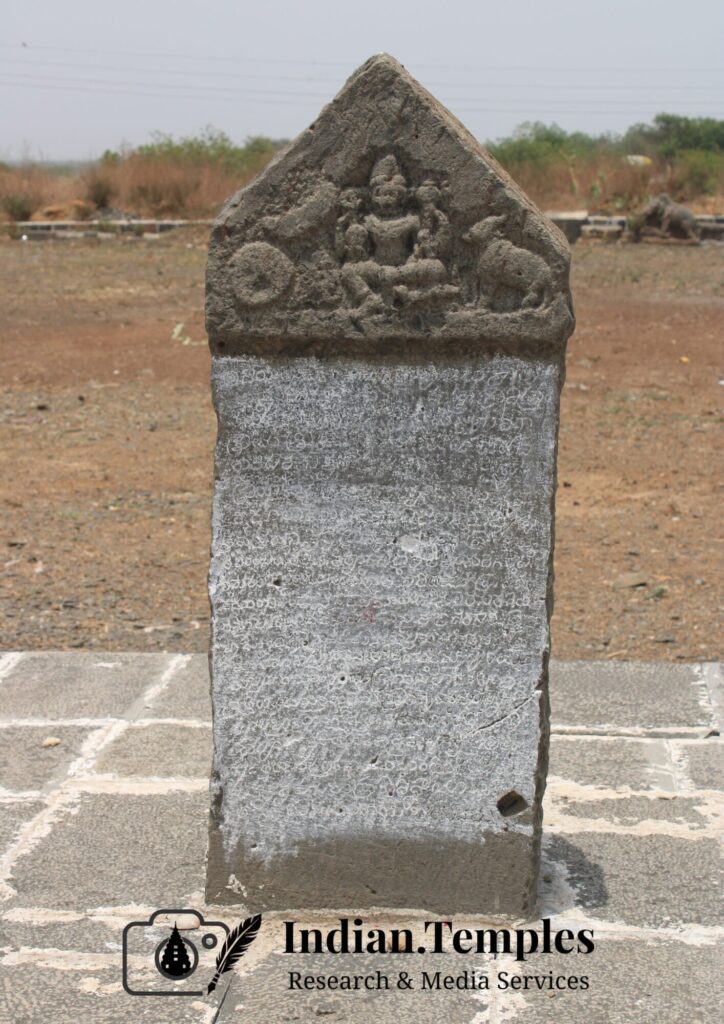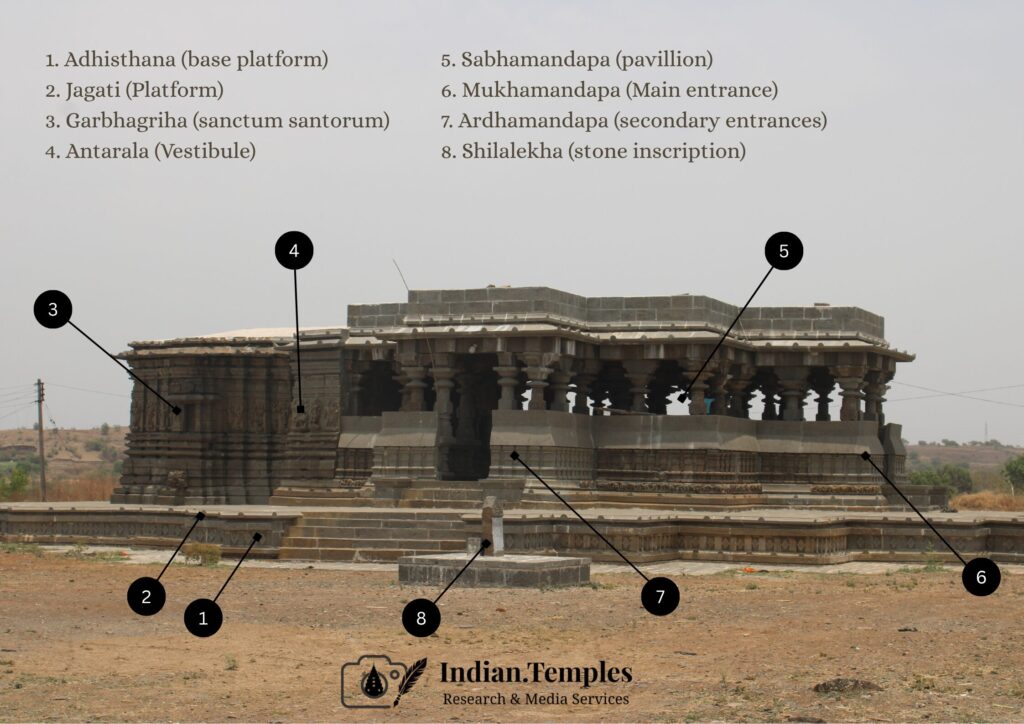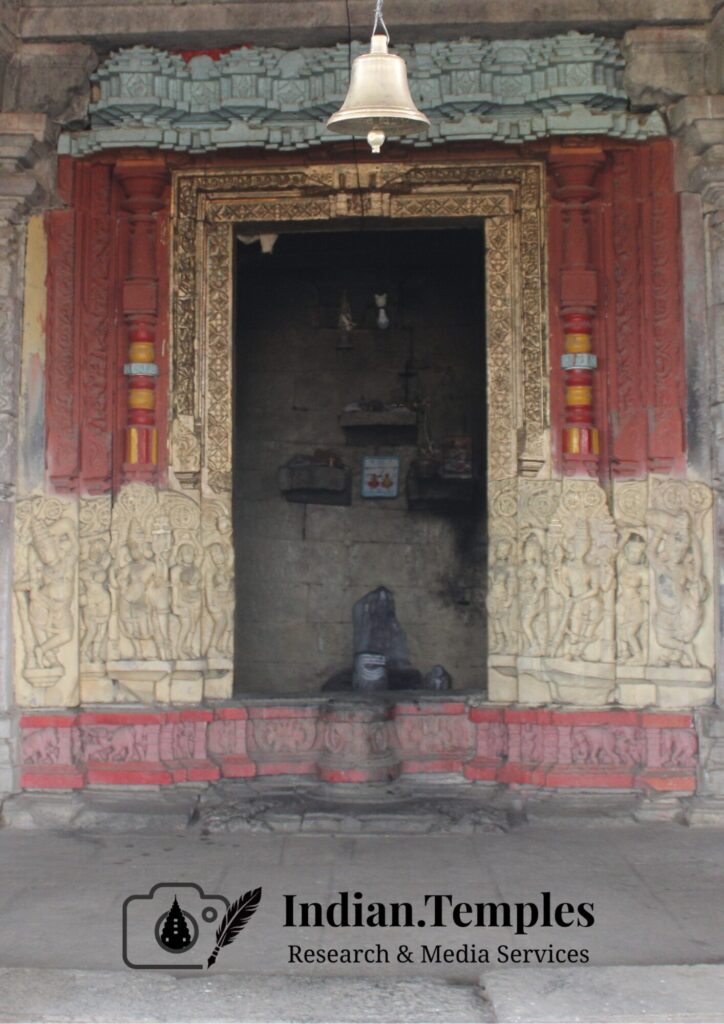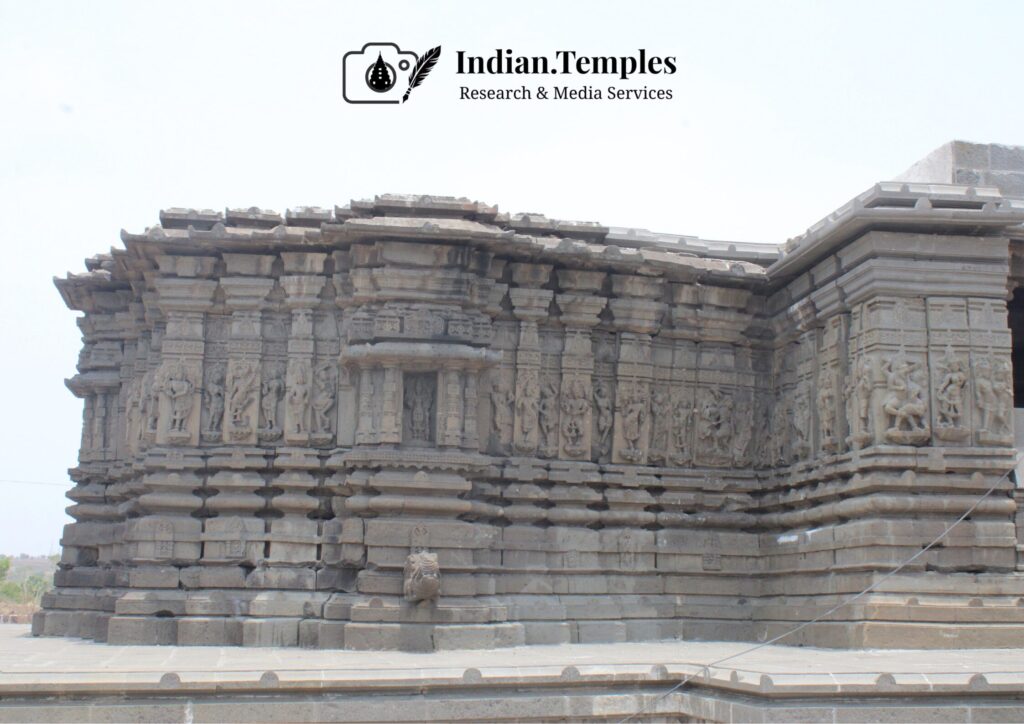The Marathwada region, the central part of Maharashtra, is known to travelers for the Magnificent Ellora caves. Beyond the Ellora caves, some know about the Ghrishneshwar temple, one of the 12 Jyotirlingas. Some history lovers may know the region for the Satvahana era marketplace of Tagarnagar, known as Ter today. But beyond these popular tourist destinations, there are many amazing archaeological masterpieces and temples in the region.
The area was ruled by the western clan of Chalukyas, also popularly known as Kalyani Chalukyas, between 10th to 12th centuries. The Kalyani Chalukyas, ruling from their capital Basavakalyan (in present-day Bidar district, Karnataka), were known for evolving a distinctive architectural language that formed a bridge between the Dravida and Nagara styles. Their reign witnessed an artistic efflorescence — a golden period that produced masterpieces. The Kalyani Chalukyas created a unique architecture style; broadly classified under the Vesara Style; in the Tungabhadra region of modern central Karnataka. The monuments of Mahadeva Temple at Itagi in the Koppal district, the Kasivisvesvara Temple at Lakkundi in the Gadag district, the Mallikarjuna Temple at Kuruvatti in the Bellary district and the Kallesvara Temple at Bagali in the Davangere district, the Kaitabheshvara Temple in Kubatur and Kedareshvara Temple in Balligavi, both in the Shimoga district, the Siddhesvara Temple at Haveri in the Haveri district, the Amrtesvara Temple at Annigeri in the Dharwad district, the Sarasvati Temple in Gadag, and the Dodda Basappa Temple at Dambal, both in the Gadag district are among some well known examples of this temple architecture.
The spread of their influence extended northward into Maharashtra, facilitated by trade, religious patronage, and Shaiva ascetic networks. Kalyani Chalukya also built multiple smaller, yet sculpturally rich, temples in other parts of their kingdom. Many of these shrines exist in today’s Marathwada region. It is in this context that the Kedareshwar Temple of Dharmapuri gains significance: it testifies to the Chalukyan aesthetic crossing the Godavari and adapting to local materials and devotional practices.
History

The epigraphical evidences suggest that Dharmapuri was a busting place in the Kalyani Chalukya era. Discovery of inscriptions from 1134 and 1137 suggest the significance of the region. The 1134 inscription discovered in Dharmapuri talks about a Murari (Krishna) matha being built in the reign of Someshwara III, a ruler of Chalukya clan. The inscription talks about a battle that took place between Someshwara III (mentioned with his title Bhulokmalla) and a king from Parmar region (Malavaraj) Jagaddev. Someshwara III succeeded in defeating Jagaddev and he improisoned him in a fort in the Sahyagiri (Sahyadri) region. There is a fort situated in the Dharmapuri village, nearby the temple. So one can assume that the inscription is talking about this fort only, where Malavaraj Jagaddev was imprisoned. The inscription talks of the town Dharmapuri as a Tilak on the forehead of earth. It talks that the town was buzzing with trade and business, and hosted multiple stepwells, temples and buildings. The inscription also compares the town with Indra’s swarga.
Another inscription, from the year 1137, was discovered in the agricultural land nearby the temple. The inscription in halekannada (older Kannada) script could not be deciphered completely. But it talks about rituals happening in the temple. Thus, the temple is atleast 900 years old. Historians credit building of this temple to Vikramaditya VI (1076-1126).
Archietecture

The temple is west facing, and is built up on high rising Jagati, that has been a prominent feature of the Chalukyan temples. The temple consists of Garbhagriha (sanctum sanctorum), connected to a large Sabhamandapa / Mukhyamandapa (pavilion) through an Antarala (vestibule). There are three entry points to the pavilion. The west facing entry point is the main entry point (mukhamandapa) and two other entry points (ardhamandapas) are on the south and north sides respectively. Until a few years ago, only the Garbhagriha, Antarala and part of the Mukhamandapa remained intact while other parts of the temple were fallen off. The archaeological department of Maharashtra government has renovated the temple, by re-building the Mukhyamandapa, Mukhamandapa and Ardhamandapas.
The Mukhyamandapa is supported on 16 pillars. A few of these pillars exist from 12th century, while rest are rebuilt recently. The pillars consist designs of Torana, Kirtimukha, Ghantika and Kumbha. Multiple Kirtimukhas can also be seen carved on the roof of the temple. The Bharvahakas are also carved at top of the pillars, at the point of confluence of pillars and the roof. At the centre of the Mukhyamandapa is the Vahanamandapa, that hosts Nandi, Shiva’s Vahana.
The square Garbhagriha measures approximately 10ft x 10ft. The internal walls of Garbhagriha are plain and without any engraving. The Garbhagriha hosts a large Shivlinga, a metal sculpture of Shiva and stone idols of Brahma and Varaha. The Shivlinga and Shiva metal sculpture has been added in later era, but the other two sculpture appear to be part of the original temple structure. They may have been a part of some other part of the temple, and were placed in the Garbhagriha when the temple structure fell down.
The Antarala (vestibule) is also comparatively plain, with two Devakoshthas (niche) on the either side. The Antarala measures approximately the same size as the Garbhagriha. The Devkoshthas in the Antarala contain sculptures of Ganesha and Dattatreya.

While the Garbhagriha and Antarala are devoid of any sculptures or engraving, the doorframe that separates the two is highly decorated with beautiful engravings. The doorframe has 5 layers of engravings. The outermost layer has lata (creepers) carved. The second and fourth layer consists of different animals, including Vyalas. The third layer is that of Stambha (pillars), while the fifth layer consists of different geometrical patterns. There is a Kirtimukha carved at the bottom of the doorframe, and a Ganesha at the top.
One interesting feature of the the doorframe is that it consists of Vaishnava Dwarpalas, hinting at this probably being a Vaishnava temple. 12th century inscriptions discovered around this temple also talks about building of a Murari matha here by Chalukya era noblemen. Probably the earlier Vaishanvite idol, that was placed here, might have been stolen or hidden from attackers. And later, a Shivalinga was established in the empty Garbhagriha.
Sculptural wealth

One note-worthy feature of the Kedareshwar temple is the abundance of sculptural wealth, that can be seen on the outer wall of the temple. The temple contains multiple Shaivite and Vaishnavite icons. These include Vishnu with Lakshmi, Parvati, Uma Maheshwar, Brahma, Garuda, Bhairava, Ganesha, Surya Chamunda. In addition, Vishnu has been depicted in various forms like Varaha, Narsimha killing Hiranyakashyapu, Vamana appearing in front of Bali, Balrama killing Pralambasura, Krishna playing flute. It is interesting how there are multiple Vaishnavite sculptures in a Shaiva temple. The depicts the harmonious co-existence of different sects in the society during Chalukya era.
The most prominent among the sculptures are the sculptures of Surasundaris that are carved on the walls. Surasundaris are one of the prominent feature in the sculptures of temples built during Kalyani Chalukya era. The Surasundaris are often associated with the Apsaras, that arrived on earth during the Samudra Manthana. The Surasundaris are often depicted being occupied with their own work or pleasure activity, independent of any male counterpart. This highlights the importance given to female empowerment and independence in the 12th century.
The walls of Kedareshwar temple present multiple forms of Sursundaris. These include Darpanika (holding mirror in hand and checking out her reflection), Kundaldharini (wearing earrings in her ears), Tilottama (applying Kajal in eyes), Karpurmanjiri (drying her hair after bath), Shukasundari (Apsara with a parrot in her hand), Markatsundari (playing with a monkey), Shalabhanjika (standing with support of branch), Patralekha (writing on a slate/platform with a pen in her hand), Nupurpadika (wearing bell anklets in her leg), different kind of Nartikas (dancers), Mardala (playing Mrudunga), Putravallabha (standing with her child by her side), Shubhagamini (a thorn is stuck in her leg and someone is trying to remove it by hands), and many more.
How to reach
To reach Dharmapuri, once can travel to Latur by train or bus. Latur is connected to Hyderabad, Nagpur, Bengaluru, Pune, Mumbai by train. From Latur, one can hire a private taxi or travel by bus to Dharmapuri. The temple is situated at approximately 60 km form Latur. One can also club the visit with a visit to Ambejogai (approximately 30 km from Dharmapuri), that has multiple ancient temples and rock cut caves.
